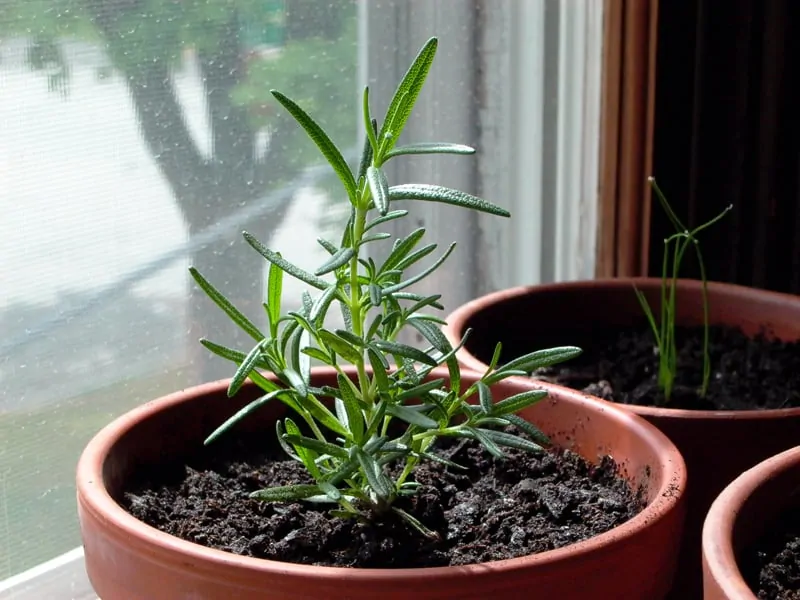Taking Care Of Rosemary In Your Home - Rosemary Plant Care
Take a look at our handy guide on growing rosemary indoors and try out your green thumb!
Rosemary is a perennial plant, which means it grows on its own. Once planted it will continue to grow and flower with proper care and it makes a great addition to your apartment garden. Even if you don’t have much space, a few herbs on a windowsill will give your kitchen a put-together, responsible look and you will be proud to have fresh spices all year round.
Take a look at our guide on how to grow rosemary indoors, and if you want a bit more variety, check out this list of small indoor plants you can grow without much hassle, right in your apartment.
Rosemary Plant Care: All About Its Uses
Rosemary is a delicious spice that goes well with a variety of meats, including chicken, lamb, and fish, as well as with vegetables like spinach and potatoes. It has a powerful and distinct taste and it pairs well with Mediterranean inspired dishes. Use it in sauces and garnishes or as a spice directly on your meats or veggies. Fresh rosemary adds a bonus flavor over dried and even more so over store-bought.
Besides its tasty benefits, rosemary is also a source of iron, calcium, and vitamin B6. It can also be used as a digestive, which is why it is often added in oily or heavy foods. Its antioxidant and anti-inflammatory benefits make it a good boost for the immune system. The smell of rosemary is said to improve focus and concentration as well.
Rosemary Plant Care: Growing Rosemary Indoors
Rosemary is a Mediterranean plant so your best bet is to replicate as much of that climate as possible. It has specific soil, light, and watering requirements, but once those are met it’s actually easy to care for. Here is how to grow rosemary indoors!
-
Pot and soil:
Rosemary enjoys a sandy, well-draining soil and not too much water on its roots, so our recommendation is to use a clay pot with draining holes filled with a cactus potting mix. Check out this useful list of potting soils to help you pick the best for growing rosemary indoors!
-
Light:
Rosemary is used to the direct scorching sunlight of Mediterranean coasts, so give it as much direct sunlight as you can. Place it in a south-facing window or the sunniest spot in your house for the best results.
-
Water:
Since it comes from a relatively dry climate, it is not used to having its roots soaked and too much water can lead to root rot. We suggest watering the soil only once it is fully dry and compensate with some misting on its leaves every 2 to 3 days.
Pro Tip: Choose a plate considerably larger than the bottom of your pot and fill it with rocks and pebbles. Add water to it and let it evaporate off the rocks for constant moisture and an aspect bonus too.
-
Temperature:
Cold is a danger for rosemary and if left outside in the frost it will likely wilt away. Avoid keeping it in the balcony or a drafty place if you live in cold or temperate climates. It enjoys warm to hot climates so it should do great inside your house.
-
Trimming:
For a thick rosemary bush that takes up little space cut off 1 to 2 inches of every branch in spring or summer, then wait 3-4 months before cutting it again. Make sure that there is enough sun to feed the new growth, so never cut rosemary in autumn or winter, even if it grows indoors. Here are more tips on how to prune rosemary to keep it in the desired shape.
-
Fertilization:
Rosemary doesn’t need to be fertilized, generally, but if it’s starting to look down you can try a light organic fertilizer like kelp derivates, manure or ask your local plant store what they recommend.
In short, treat your rosemary bush pretty much as you would a cactus or succulent. Here is a bite-sized helpful summary of what we said above.
Light requirements
Keep in as much direct sunlight as possibleWatering frequency
once a week, mist occasionalyPreferred temperature
Warm environmentsDifficulty
EasyRosemary Plant Care: Trim The Flowers
Once your rosemary bush is old enough, it will start to bloom. Rosemary flowers are beautiful to look at and quite tasty. They are sweeter than the leaves but have almost the same basic aroma. Cut them off as soon as they start to bloom and use them in salads or preserve them in sugar for decorating cakes. Do not leave them on the stem, however, because they will use up the plant’s resources without any purpose.
Final Thoughts
We hope our guide on rosemary plant care helped you increase your indoor garden and you are now convinced to grow your own rosemary plant indoors. Do you have any tips? Did you grow your plant successfully? Let us know in the comment section below!






